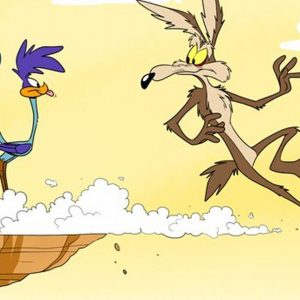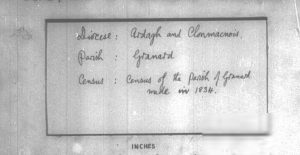Historic Irish forenames have a reputation for being dull and repetitive to the point of madness. Mary John Mary John Mary John Mary John Mary …
It’s hard to put yourself in the shoes of a John Sullivan in Kenmare in 1840 with fourteen first cousins, forty second cousins, two uncles and six great-great grandparents all called John Sullivan who thought it might be a good idea to name his son … John Sullivan. But he did. And his fourteen first cousins, forty second cousins, two uncles and six great-great grandparents also called their sons John.

Look more closely and the picture gets more nuanced. There are strong local associations between some forenames and specific localities. You’ll almost never find a Cornelius or a Jeremiah or a Bartholomew or a Hanorah outside Munster. Sabina (or Sally) is heavily associated with Galway and Connacht. A Philip is most likely from the Cavan/Monaghan/Fermanagh area. (But most Phillip McCabes had fourteen first cousins, forty second cousins, two uncles and six great-great grandparents all called Phillip McCabe). Gobnait is almost excusive to the Caherciveen area. Festus or Festy is only found in west Galway, around Clifden.
Knowing there were bound to be instances like this that I’d missed, I set off to mine the civil birth records 1864 to 1913. And ended up mapping them all.
As always, a visualisation makes some things jump out. Kieran is almost exclusively a Westmeath/Offaly name. But spelt ‘Kyran’, it’s almost exclusively Kilkenny.



Abigail is common only in two distant areas, around Belfast and in south-west Cork. Roger appears almost only in Connacht and Munster.
The main insight, especially from browsing the names, is that mis-spellings and mistranscriptions are depressingly common. And that some names are so numerous your computer will explode if it tries to map them all, so I left them out. A full list, with the mind-boggling numbers of registrations, is below.
You can play with all of these for free yourself in the Names section of the site. Enjoy.
The most common Irish forenames 1864 to 1913
Note “Unknown” at No. 10 with almost 200,000 registrations. Many Lying-in Hospitals in urban areas block-registered newborns with surnames only. Be warned.
| Rank | Name | Number |
|---|---|---|
| 1 | Mary | 622,622 |
| 2 | John | 462,084 |
| 3 | James | 303,156 |
| 4 | Patrick | 290,455 |
| 5 | Margaret | 263,951 |
| 6 | Thomas | 241,965 |
| 7 | William | 239,271 |
| 8 | Michael | 215,226 |
| 9 | Bridget | 207,127 |
| 10 | Unknown | 187,657 |
| 11 | Catherine | 181,431 |
| 12 | Ellen | 156,439 |
| 13 | Elizabeth | 117,622 |
| 14 | Anne | 111,725 |
| 15 | Sarah | 95,600 |
| 16 | Joseph | 86,304 |
| 17 | Robert | 82,974 |
| 18 | Edward | 63,956 |
| 19 | Jane | 55,845 |
| 20 | Daniel | 55,790 |
| 21 | Eliza | 54,221 |
| 22 | Annie | 51,903 |
| 23 | Peter | 49,537 |
| 24 | Kate | 48,902 |
| 25 | Francis | 47,216 |
| 26 | George | 46,505 |
| 27 | Samuel | 42,136 |
| 28 | Julia | 39,788 |
| 29 | Martin | 39,499 |
| 30 | Charles | 39,429 |
| 31 | Johanna | 37,966 |
| 32 | Hugh | 36,411 |
| 33 | David | 36,134 |
| 34 | Richard | 35,456 |
| 35 | Henry | 35,170 |
| 36 | Denis | 33,688 |
| 37 | Agnes | 33,297 |

